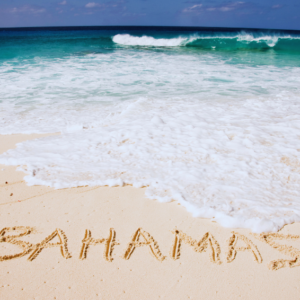When I say hiking, I actually mean any physical endeavor that we enjoy in the outdoors, and it is definitely one of the most active and fun things to do in the outdoors. It is wise to mention that people who go on a hike for the first time do not know much about hiking gear because they learn more while trying it out.

For a safe hike and therefore an enjoyable hike, especially if it is for beginners, there are important hiking gear that everyone needs to have with them. In this article I will tell you what hiking gear is essential for beginners and what to consider when buying equipment.
Hiking Trail Essentials
1. Backpack
A good fitting backpack is necessary for hiking. There also must be enough of it to carry all the items you may require while you’re away ranging from water, food, first aid kit, and so much more, as well as be comfortable to wear.
Try and find a backpack with thick shoulder straps and a waist belt as they will spread the weight out better. That’ll help relieve pressure on shoulders and back especially when you are out hiking a long time.
When choosing the best backpack, it’s also important to fit the sizes and the amount of time you’ll use when doing a hiking expedition. For daily trips and simple hiking or easy hikes, a small backpack with 20 liter carrying capacity is perfect.
If you are hiking overnight or on more difficult terrain, you will want a slightly larger backpack with 40 liter carrying capacity. With packing, don’t forget the size of the backpack because overloading it may result in discomfort and even injuries!
2. Water Bottle or Hydration System
Water is vital in any hike. It is important that you should make sure that you have enough water with you as you hike. A recommended amount includes carrying at least 2 liters of water for every person in the group a day depending on the trail in consideration. It depends on the weather, if you are in a hot dry area, you may need to pack even more.
Staying hydrated depends on your water bottle or any hydration system that you will choose and have with you all through the trail. Several choices have been presented in this paper, which are disposable plastic bottles, reusable bottles that are BPA-free, and hydration systems with reservoirs.
Disposables bottles are normally light and easy to carry while the reusable ones are more economical and can be refilled from the available water sources in the trail. Portable water filters are good for longer treks since you can have more water than you need while being able to drink from the filter without removing the backpack.
3. Map and Compass
You have to always expect that the trail conditions, weather, or health condition of the people in the group will vary by high or low. In such circumstances a topographic map and compass can be a hiker’s best friend as it will help him know where he is and what surrounds him. While a map is used for planning for the journey and in the actual hiking, a compass relieves you of the inconvenience of having to orient the map every time visibility is affected.
If you are getting ready to go hiking, select the map that will cover the area where you hike, but at the right scale. Another feature which can be easily identified on topographic maps are contours, which are ink lines that are drawn from point to point to indicate equal elevation.
There can be a standard compass and compasses which are compatible with the GPS system. The simplest compass should be adequate for many hikers, but if you are going on more detailed navigation, then there are better designs available.
4. First-Aid Kit
There can be mishaps on the trail, therefore there is a need to be prepared for the worst when it comes to health complications. If you do go hiking though, there are first aid kits that contain a few necessary items which are good to have on you in case of emergency. At a minimum, your first-aid kit should include:
- Band aids of different types and sizes
- Gauze pads and medical tape
- Antiseptic wipes or solution
- Tweezers and scissors
- Painkillers; Paracetamol
- Any personal medications
This item may include but is not limited to a small first aid kit as well as a first aid manual or a guide.
Sometimes, you may not want to use your first-aid accessories during your hike but better to be prepared. First-aid kit should be placed in a waterproof bag or any waterproof containers because some of the contents are sensitive to water.
5. Multi Tool or Knife
A multi-tool or knife can be a useful companion for hikers out there at times. It can cut a rope, trim branches, open packages or perform any other task that any human can do. There seems to be a wide variety of multi-tools in the market ranging from the small keychain models to the complex model with a variety of uses. Because multi-tools are used when hiking, potential users should consider the extra tools to be used and the size of the tool.
Another example of knives that can be useful to hikers is that they are knife designed to cut or sever ropes, remove unwanted branches or a way of self-protection. In choosing a knife one has to consider the toughness, simplicity and convenience of carrying it with him. Please ensure to always use your multi-tool or knife as you follow standard safety measures to prevent awful mishaps from happening.
Also Read - 7 Basic Tips for Hiking Beginners
Footwear and Accessories
6. Hiking Boots
Hiking boots are meant to be used for support, protection and with especially intended to have grip in different surfaces on the ground. When selecting hiking boots, consider the following factors: the need to provide support to the ankle section, handle waterproofing, cushioning and making the boots durable.
It is preferred that beginners find a model with adequate ankle protection to avoid accidents when walking on rough terrain. Waterproofing is also crucial for the feet dry during the rainy season or crossing a river for instance. High-density cushioning means that the boots provide comfort during several miles hikes while durability means that the boots will last long.
In the case of hiking boots, one should have to season them before they undertake the long and tiresome hike on steep slopes so that they avoid blisters and so on. Thus, wear the shoes for some while in the store so you get a sense as to how they fit both in terms of comfort.
7. Hiking Socks
In the manufacture of hiking socks there are preferred fabrics for which some of the most common include Merino wool, nylon and synthetic fibers. Merino wool is preferred because it is gentle, it allows sweat evaporation thus reducing formation of blisters. Nylon for sturdiness, Synthetic fabrics for lightness and drying happens swiftly.
Socks are available in different thicknesses which are usually described in numbers of “levels” or “weights”. The audio signal of the increases size of the sock means that thicker sock will make your feet warmer.
Socks for hiking should not be too thin but should also not be too thick, medium thickness socks are good for day hiking. In colder or longer hikes, additional thickness is recognized as generating more heat. You’ve got to choose the right size of socks when you buy them, not too tight to rub against skin when you wear them, nor too loose.
It is also important to focus on the features of the socks together with the material and the thickness. Precautionary takes also include adding padding and stiffening covers for the feet as a bonus.
8. Trekking Poles
Hiking poles or trekking poles are one of the essential items a hiker should not lack. They give you extra support, take some pressure off those joints and assist in balance during such terrains. These are specific and are extendable or non-extendable and are often in light metals like aluminum, carbon fibers or plastic materials.
Trekking poles should have adjustable length, wrist bands and should be comfortable to hold as they use foam. Trekking poles help in saving a lot of stress on the knee, ankle, as well as back area. You can get really good use out of trekking poles if you place them on the front side of each leg movement and use the tips to push you further.
When hiking you can also use trekking poles to assist in balance on steep terrain, whether it is climbing or descending and to probe the ground for any obstacles or soft spots. The easy control of trekking poles will make you begin to feel that they are a normal part of hiking gear and make a huge difference.
9. Headlamp or Flashlight
A headlamp or a flashlight for hiking is critical especially in early morning, late evening or on cloudy days. Lighting should be handy as this would enable one to avoid stretcher bearers and trips, hence reducing on accidents.
Looking at a headlamp or flashlight, its features should include it should be durable, waterproof, and lightweight. Durability of the battery is also an important measure, as you don’t want your light to just die on you on a hike.
Headlamps are especially preferable among hikers as you do not need to have them in your hands, holding on to the rail or with the map. They also let you make use of both of your hands for climbing or other tasks as you wish.
Flashlights are quite helpful when you want a bright, directed source of light for focused purposes such as reading compass or scanning for a trail. Always carry spare batteries because the light which you will be using throughout your hiking activity may fail you halfway.
10. Emergency Shelter
It is important as a hiker to have a dependable emergency shelter, even if you are only going on a day hike or going for a multiple day’s backpacking. Emergency shelters can range from a tent or tarp shelter to a bivy sack. Also consider the climatic conditions you are likely to encounter in that place, the weight, and the dimensions.
Tents are used for such incidences because they offer you a sheltered area which is enclosed and can shield you from unfavorable conditions. Make sure they look for high-quality tents made from light, stormproof and easy to erect material. Tarp shelters are another great examples of emergency shelter as they are lightweight, easily portable and can be quickly erected and come in various types. Bivy sacks are small, very low in weight, and shield from the ground but fewer GI than a tent.
Whatever type of shelter you decide on, make sure that you go through the process of setting it up before your hike so that in the event of an emergency you can do so quickly.
11. Whistle
A whistle is not very noticeable but rather an essential item when hiking. It is possible to blow a whistle in case you need assistance and you want to attract people’s attention because this signal can be heard farther than if a person is shouting.
In fact, they suggest that hikers should plan to have a whistle with them for any hike and practice using the whistle to alert for assistance. Whistles are available in different forms of material and construction but the frequent type is the plastic and metal kinds.
A whistle should be loud, waterproof and very easy to blow into when chasing the ball. It’s also important to blow the whistle and know some standard whistle signs, for example, the three short blows mean ‘help’ while the six short blows mean ‘all clear’.
Also Read - Hiking with Your Dog: Getting Started
Clothing and Sun Protection
12. Moisture-Wicking Base Layers
Your first layer of hiking clothing should be any moisture-wicking underwear you may wish to wear. It’s this layer that controls your body’s temperature and moisture, warming you when you’re cold and cooling you down when you’re hot. Base layers, for the most part, are constructed out of fabrics such as merino wool, polyester or synthetic varieties that actively pull sweat away from the skin thus keeping the wearer dry.
Long-sleeved shirts, short-sleeved shirts, leggings and shorts featuring base layers are all available. Select the right parts depending on the weather you will be undertaking the hiking activities in. During physical activity wear long sleeved shirts or any extended clothing during cooler climate. If you feel the weather is warmer than you should wear short trousers and short sleeved shirt. Just remember to avoid using too heavy or airtight fabrics because they will make you uncomfortable when hiking.
13. Insulating Mid-Layers
The second layer of your hiking apparel is an insulating layer that is in between the base layer and the outer layer. The next layer is expected to be warm and to insulate your body’s production of heat. The mid layer garments include a fleece jacket or down jacket or an insulated vest, possibly made from such down or synthetic insulation materials.
For colder conditions down jackets are better, and fleece is better for milder conditions. You should base your decision of whether you’re searching for a jacket or a vest, on the expected weather of the places you’re going to undertake your hiking adventures and should for these reasons get a vest or a jacket that will go by each climate settlement. Thin and space saving garments are easily portable making them perfect to be carried in mid-layer bags.
14. Waterproof and Breathable Outer Layers
The last piece of clothing you wear for hiking is a waterproof yet breathable shell. This layer is intended to repel the ambient conditions starting from water in a liquid state such as rain and going up to strong winds and snow. Waterproof materials such as Gore Tex or eVent, let the sweating out while blocking rain and snow are usually used to form the outer layers.
Choose an outer layer that feels good around your body and forms to you accurately, allowing comfortable hiking over various types of terrain. Hooded jackets will come in handy because they are able to offer additional wind and rain protection. Do not forget that the outer layer should have pockets for minor and small items such as your phone or keys, snack money etc.
15. Sun Protection
This is because injuries arising from the sun such as sunburn, heat exhaustion among others are very likely to happen and gain a hike in no time at all. To minimize the dangers of the sun, it is recommended that you carry along hat, Sunglasses and Sunscreen. A hat’s wide brim or a cap will cover as much of the face, neck, and ears as possible; sunglasses protect the eyes. Put on proper sunscreen for especially exposed parts of your body, like the face, neck and arms, and don’t forget to apply it!
As for the sun, always wear protective gear such as caps, shades, and creams, and wear light-clearance, comfortable and free-fitting clothing. Long sleeves are equally as important as the face, so long sleeves and pants go a long way in protecting the skin from the sun as well. Finally wear moisture-wicking socks and breathable shoes or boots to avoid blisters and your feet will be dry all through.
Conclusion
For beginners to have a good experience when hiking they should ensure that they own the right hiking gear. In this article, I have explained and listed several crucial hiking gear that can determine success when going on a trip.
In addition, while you are bound to spend more time figuring out what the best hiking gear to purchase is, doing so results in durability of equipment for several other hiking endeavors in the future. Finally, the use, safety and comfort of the accessory is equally important if you are out for a hike and want to be in the magnificent views of nature.
Let me determine by saying that letting go of the city life into a trail that brings you around nature how I perceive hiking as an effective exercise that can help you not only your body but your mind as well. But to get the most from your hiking experiences it is important that you use the best hiking gear that you can.
When you prepare as a beginner, outfitting yourself with the best hiking gear for a beginner would make a lot of sense, and would go a long way in setting up your hiking adventure in the right tone and spirit.






